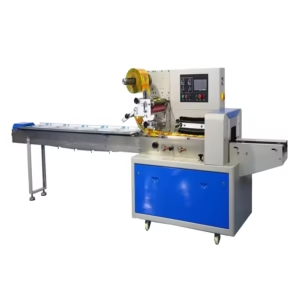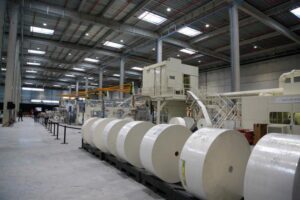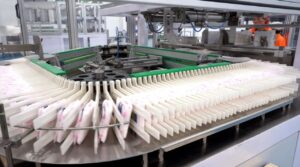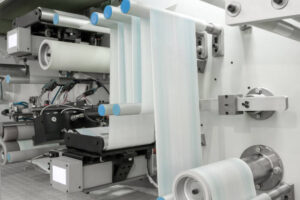Today we have made up our minds to describe the examples of non-woven fabric examples, which would be a very informative article & to the point. </p
So let us pay on the nail & start describing the examples of non woven fabric.

Get Free Sample Kit Of Our Fabric At Your Door Step
- Online Order
- Door Delivery
- 1-Click Quotation
Here are shown the Non Woven Fabric Examples, also you may print this to get Non Woven Fabric Examples Pdf.
Types Of Non-Woven Fabrics
- Staple nonwovens
- Melt-blown
- Spunbond
- Flashspun
- Air-laid paper, etc.
are some familiar examples of nonwoven textiles.
Let us describe them in depth.
Types Of Non Woven Fabrics Pdf: Non-Woven Fabrics : Different Types
The staple nonwovens are manufactured in four easy processes. These processes are ➖
- Spinning of the fibres
- Making bales
- Dispersing over the belt
- Spreading in an aligned web structure
The spreading process may be done by three methods hence onging three types of nonwoven fabrics:-
- Wetlaid (fibre length: 0.64-1.91 cm)
- Airlaid (fibre length: 1.3-10.2 cm)
- Carding or Crosslapping (~3.8 cm)
Hence three types of nonwoven originated.
Meltblown
This process is done by extruding the melted polymer through spinners or die, (In one inch 40 holes), the fibres are elongated and cooled after hotair blowing.
| Name | Non Woven Fabric |
| Composition | Polypropylene (PP) |
| Weight of A Roll | 40-80 KG or As Per Order |
| Width of A Roll | 63” & All sizes |
| Colour | Black, Ivory, Red, M. Blue Or As Per Order |
| Pattern | Plain |
| Certificates | ISO, GMP, FDA, NITRA, CE |
| MOQ | 1000 kg (1 Ton) |
| Brand | Favourite Fab |
| GSM | 40 gsm or As Per Order |
| Material | Non Woven Fabric |
| Composition | Polypropylene (PP) |
| Usage/Application | In the Medical, Bag, Agriculture, and Mattress Industry |
| Features | Strong FibresFine PatternDurableManufactured Untouched |
| Packaging | In ROLLS, wrapped with Shrink + Raffia |
| Price | 110 Rupees Per KG |
Spunbond nonwovens
It is the most famous process because of its various dimensional uses. In this process, the polymer is first melted, stunned & dispersed by a deflector to form a web-like structure. This is done on a fast-moving belt with an economical process.
As per the raw material used here are two variants:-
- PP Spunbond (Polypropylene raw material)
- PET Spunbond (Polyester raw material)
When the PP spunbond fabrics are combined with melt-blown nonwoven, a new layered material is formed called SMS or Spunmelt (spunbond-meltblown-spunbond). PP spunbond non woven fabric is one of the Examples Of Non Woven Fabric For Mask.
Due to the higher filtration capacity of melt blown fabric, it is convinced that spunbond, hence become so much efficient in filtering the minute particles hence used in face masks, PPE kits, gowns, drapes, etc.
A new type of nonwoven is manufactured called Spunjet by Reiter, which is being bonded with a new innovative technology.
Flashspun
These are manufactured when a dissolved resin is sprayed inside a chamber during solvent evaporation.
Air-laid paper
This is a somewhat similar process as per nonwoven fabric manufacturing but the raw material is wood-pulp.
Based on Bonding
Staple or Spunlaid Nonwovens require a strong bond to make them in use. There are various bonding methods available in the market which are invented as per use.
- Hydroentanglement: Invention of Spulace
- Needle punching/Needlefelting: Needlepunch nonwoven or Needlefelt nonwoven
- Chemical Bonding, Etc.
The World of Non-Woven Fabrics: Everywhere You Look
Content: “Non-woven fabrics have become an invisible thread woven into the tapestry of our everyday lives. From the disposable wipes you use daily to the medical supplies keeping us healthy, these versatile materials play a surprisingly significant role. Unlike traditional woven textiles, non-woven fabrics are created by bonding fibers together without weaving. This unique process allows for a wide range of properties, making them disposable, affordable, and highly adaptable to various applications.
-
Spunbond Non-Wovens:
- Manufacturing Process: Spunbond non-wovens are made by extruding continuous filaments onto a conveyor belt, which are then bonded by heat and pressure.
- Properties: They are strong, durable, and have good breathability.
- Expanded Applications: Spunbond non-wovens are ideal for applications like bags, envelopes, and agricultural covers. Their water-resistant nature makes them perfect for disposable mattress covers or protective layers.
-
Meltblown Non-Wovens:
- Manufacturing Process: Meltblown non-wovens are produced by melting thermoplastic fibers and blowing them onto a conveyor belt, creating a fine fibered web.
- Properties: They are known for their excellent filtration properties and soft texture.
- Expanded Applications: Meltblown fabrics are commonly used in surgical masks, air filters, and oil absorbents due to their filtration efficiency and absorbency.
-
Needle-punched Non-Wovens:
- Manufacturing Process: Needle-punched non-wovens are made by mechanically interlocking fibers with barbed needles.
- Properties: They are strong, dense, and have good abrasion resistance.
- Expanded Applications: Needle-punched non-wovens are used in geotextiles, automotive interiors, and upholstery due to their strength and durability.
Conclusion:
The Unseen Power of Non-Wovens
Content: “From medical wipes and hygiene products to filtration materials and construction components, non-woven fabrics play a vital role in countless industries. Their versatility, affordability, and often sustainable properties make them a valuable resource in our modern world. Here at Favourite Fab, we’re committed to providing high-quality non-woven solutions to meet your specific needs.”
Additional Information:
-
A Brief History of Non-Wovens: Non-woven fabrics have a long history, dating back to early felting techniques used by ancient civilizations. However, the modern non-woven industry began to flourish in the mid-20th century with the invention of specific production processes, such as needle punching and thermal bonding.
-
Production Processes Explained: Non-woven fabrics are produced using various processes, including spunbond, meltblown, and wetlaid. Spunbond involves extruding filaments onto a conveyor belt, meltblown uses melted fibers blown onto a conveyor, and wetlaid combines fibers in a water-based solution before bonding them together. These processes result in fabrics with different properties suitable for a wide range of applications.
FAQs
What are the uses of Nonwoven Fabrics In Everyday Items?
Everyday items, like your face mask, shoe cover, bouffant cap, d cut bag, w cut bag, your chair backing, etc. are general examples.
What Are The Types Of Non-Woven Fabrics?
Spunbond, meltblown, spunmelt, spunalce, etc. are popular types.
Whar are Characteristics And Uses Of Non Woven Fabric Cloth?
You may visit our dedicated blog on the above topic.
What are Non Woven Fabric Examples?
As described broadly above, Example Of Non Woven Fabrics are pp spubnond, spunlace, meltblonw, PET spunbond, etc. these are some Non Woven Fabric Names.
What are Examples Of Products Where Non Woven Fabrics Are Used?
D or W type non woven bags, box bags, agriculture crop cover, fruit cover, shed nets, face mask, ppe kits, etc.
What are Non Woven Fabric Examples And Uses?
For knowing about the Non Woven Fabric Uses in detai, you may visit our latest blog segment & product page where you may fnd the

Get Free Sample Kit Of Our Fabric At Your Door Step
- Online Order
- Door Delivery
- 1-Click Quotation





































We Do Business On Trust.Our Nonwoven fabric Business is Built on trust. Trust starts with Transparency.
Mr.Ramniwas Garg Founder Of Favourite Group